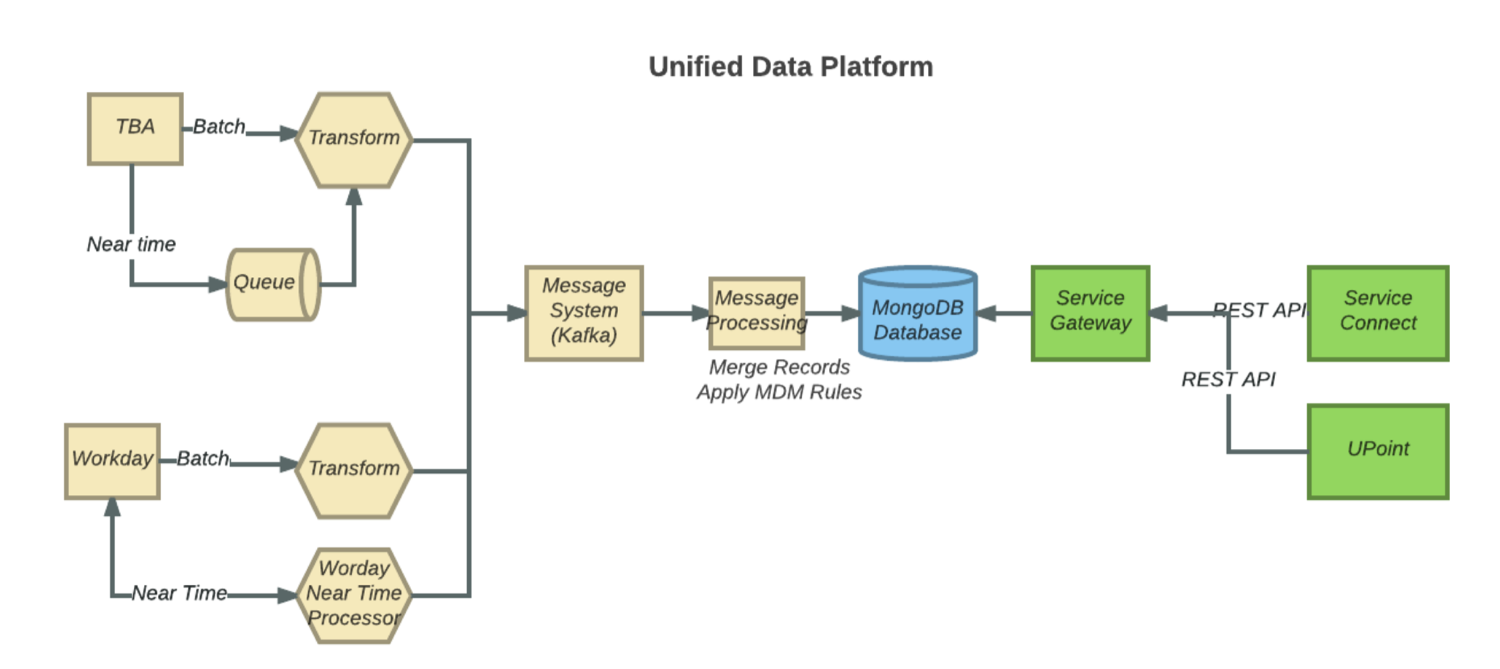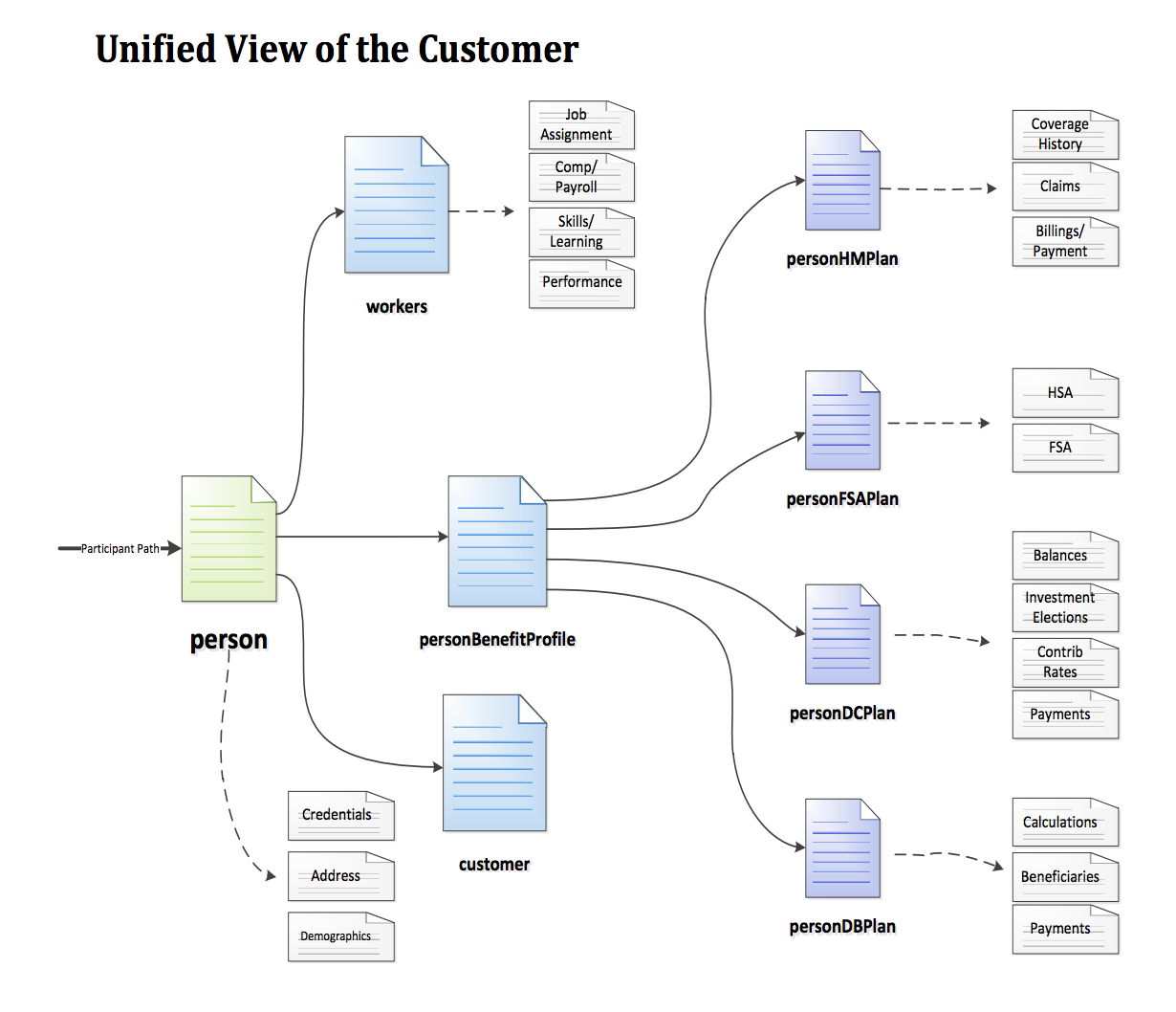How Alight Solutions (Aon Hewitt) Improved Customer Experience by over 250x with Mainframe Offload and Single View
Fortune 500 companies are increasingly seeking ways to innovate in customer experience, while reducing reliance on legacy technologies. Alight Solutions, formerly part of Aon PLC, was attempting to integrate customer data stored in multiple source systems hosted on its zOS mainframe and in cloud services, while at the same time improving developer productivity, and reducing costs.
Alight’s solution was to build a customer 360 single view platform using MongoDB and Apache Kafka, and was presented by Christopher Roberts, the company’s VP of Enterprise Architecture, during this year’s MongoDB World ‘17 conference. You can view a recording of “Aon: Taking Big Iron to Ludicrous Speed” along with Christopher’s slides at the MongoDB World ‘17 site.
Alight Solutions is the leading provider of outsourced benefits administration, cloud-based HR and financial solutions, serving close to 40 million employees from over 1,400 organizations, including nearly 50% of the Fortune 500.
To meet the demands of the business, the architecture team was tasked with building a cross-platform single customer view to unlock greater data insights and improve application responsiveness, while also reducing mainframe costs. Retrieving customer data from frontend consumer interfaces such as Salesforce, the UPOINT HR portal, and mobile apps meant accessing multiple backend source systems running on a mainframe platform and Workday. Each request added to the ongoing mainframe MIPS costs, and scaling multiple systems to support customer growth was proving difficult. Query latency was typically 0.5 of a second, which negatively impacted customer experience.
As the project was scoped, consideration was given to copying all customer data into Alight’s existing Hadoop system, and serving the single view from there. However, Hadoop didn’t offer the OLTP or low latency demands of the app, so the business needed an alternative approach.
After researching multiple options, the Alight team decided MongoDB was the best choice for its single view database. With its flexible document data model, MongoDB offered the schema flexibility needed to accommodate multi-structured, polymorphic customer data from the source systems. Its expressive query language and secondary indexes enabled business users to access customer data in whichever way they needed. MongoDB’s distributed, self-healing architecture enabled Alight to operationalize the single view, ensuring high scalability and always-on availability with minimal overhead to the ops team.
Application performance was a key driver for the project, and MongoDB delivered. With customer data aggregated into a single document, query latency was reduced from 500 milliseconds to less than 2 milliseconds – a 250x improvement!
Delivering the Single View on MongoDB
In his session, Christopher walked through the three phases of the project, from the initial phase delivering a working solution in less than six months, through to the current phase that provides more granular insights into each customer’s benefit classes. He shared tips and patterns for providing low latency solutions that can be leveraged effectively on legacy mainframe and modern cloud platforms.In phase 1, data was extracted from the mainframe in batches, transformed in Hadoop, and then loaded into MongoDB. Phase 1 was a vital first step in demonstrating the possibilities of building a single view, but Hadoop’s fragility and reliance on multiple independent technologies complicated the data transform process. In addition, change data capture was slow, and the data merging and matching rules were too simplistic, affecting data quality.

In phase 2, Alight replaced Hadoop with Kafka, enabling modifications to source data to be sent as messages in both batches and in real time streams. Data could then be merged through the application of more sophisticated Master Data Management (MDM) rules, before being loaded into MongoDB, where it was exposed to consuming systems via a REST API.
In its current third phase, Alight engineers are redesigning their data structures to model customer data by benefit class, enabling greater deployment flexibility for scalability and high availability. Data versioning is also being added to track changes to each customer record over time.

Christopher wrapped up his session by talking through the benefits the single view project has delivered to the business:
- Customer experience: faster responsiveness, and ease in delivering new functionality
- Lower costs: fewer calls to the mainframe, and reductions in peak consumption
- Unlocked innovation: greater insight into customer data, and improved agility in delivering new services
To learn more, take a look at the slides and recording.
To get started in customer experience innovation, download our 10-Step Methodology to Building a Single View of Your Business whitepaper.